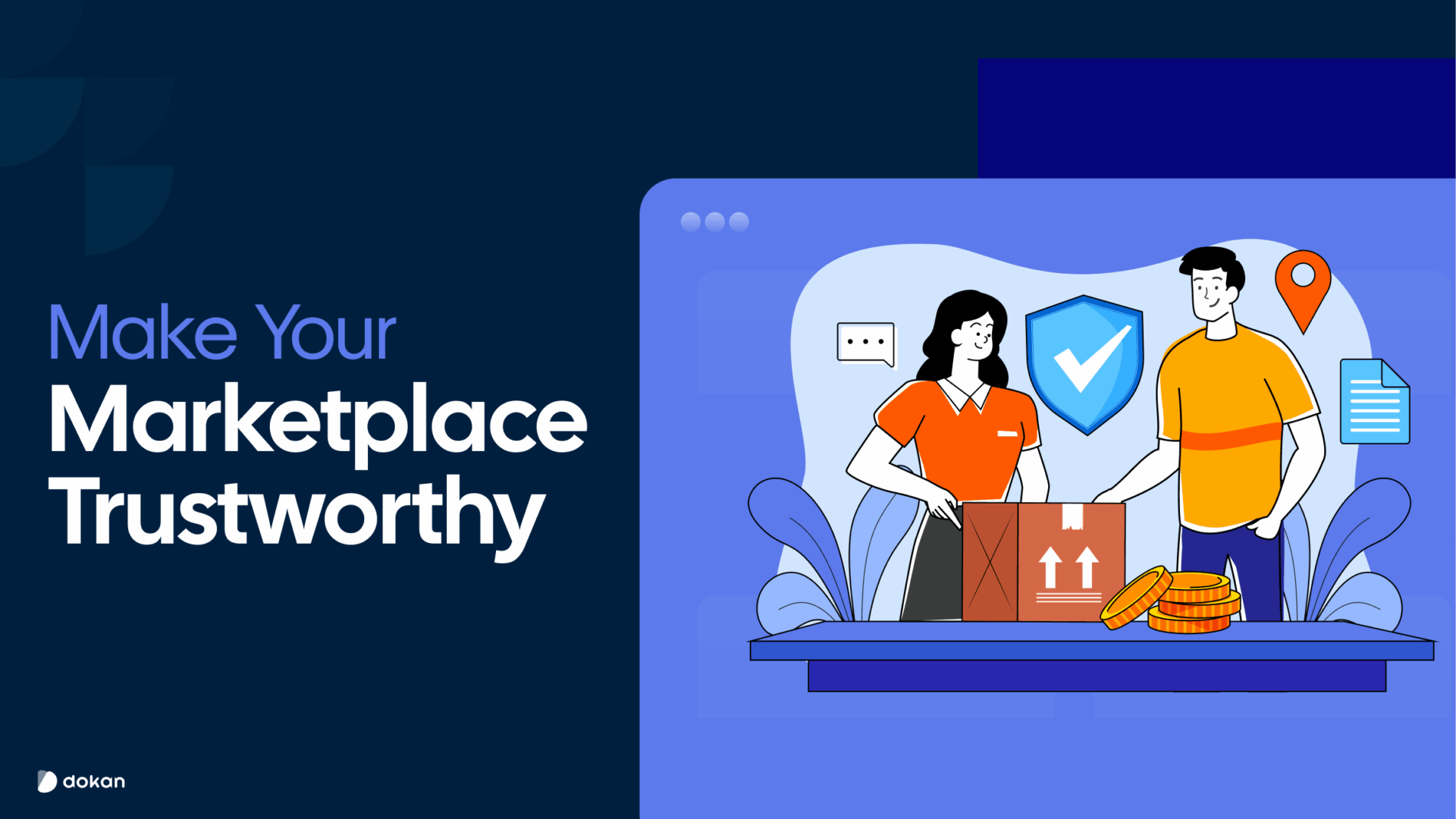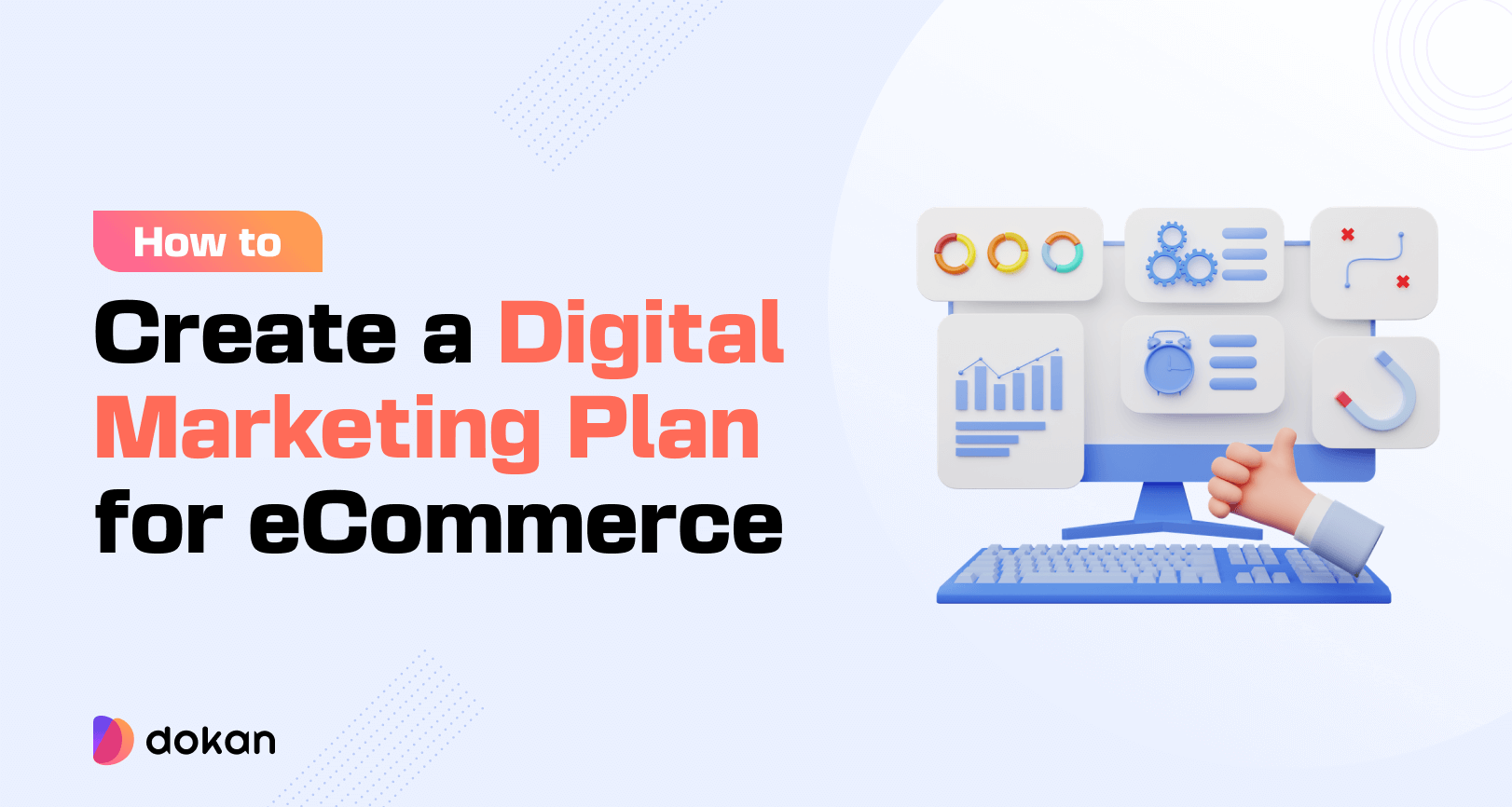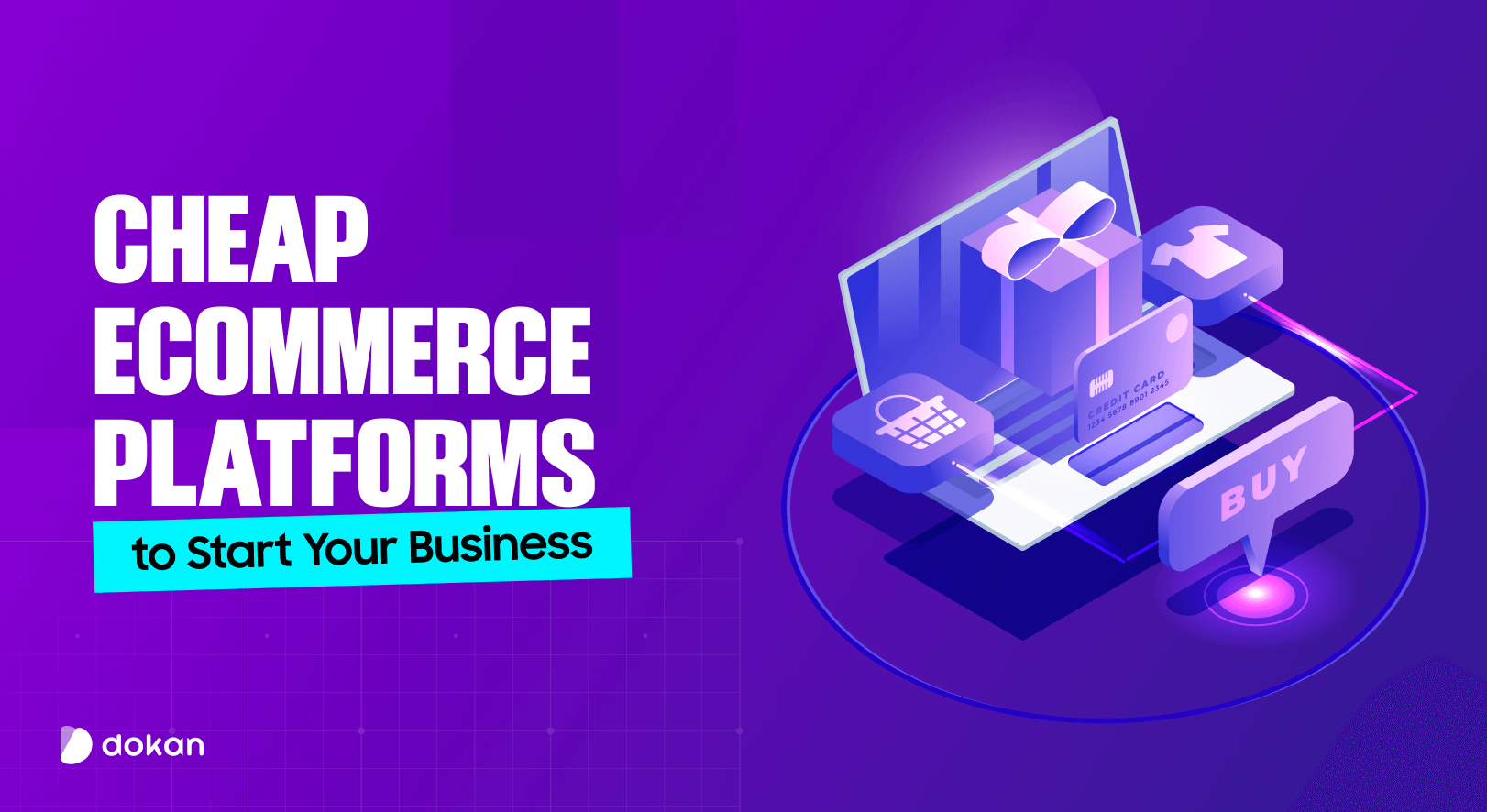Creating an eCommerce website can be easier but surviving in this competitive industry is challenging. From the very first day, you have to be strategic to maximize the success rate with minimal errors.
Budgeting is one of the most important factors to consider while developing your eCommerce site. Lower your operational cost to lock in more profit.
Remember, it doesn’t require always spending a lot to produce great outputs. You should have proper knowledge about where to spend and how to bring maximum output out of your expenditure. In spite of having so many options, get only the things actually essential for your site. Otherwise, it may break the bank.
In this blog, we’re going to break down all the possible costs for each sector, hence you can start an online store on a budget and generate great revenues.
Why Budget is Important to Create a Futuristic eCommerce Website
The number of digital shoppers has been growing over the past few years. According to Statista eCommerce sales are expected to reach $6.3 trillion by 2024.
Due to the massive growth of eCommerce, hundreds of entrepreneurs enter this market with their creative business initiatives. Hence, the race between eCommerce business owners has become fiercer.
If you are wondering about the possibility of being successful in the eCommerce industry, there is enough space to penetrate into the market.
You can plan for some unique and trendy features for your eCommerce site to make it futuristic and stand out from the crowd. E.g.,
- Chatbot to serve customers’ queries 24/7
- Multiple payment options
- Responsive design for all screen sizes
- Site search option to find desired products
- Order tracking option to get real-time shipping status
If you want to create such a futuristic eCommerce website, you need to have a solid budget plan so that you won’t miss anything. Otherwise, in the middle of the project, you’ll lose track of which feature you need to implement and how much you should spend on that.
Apart from it, there are some other crucial reasons for having a bulletproof budget plan. Such as-
- Forecast total cost of the project
- Determine if an investor is required
- Calculate the accidental cost of site development
- Figure out additional costs like SEO, content, and marketing.
This is why you should seriously think of your budget plan.
Which Web Development Platform You Should Choose As a Beginner

There are several popular eCommerce platforms to create your online store. Before choosing a platform, make sure you have had enough research on that particular platform. Because choosing the wrong platform will only increase the inconvenience for you in the future.
Here is a list of the popular eCommerce platform that we are going to talk about:
- Software As a Service – SaaS
- Licensed eCommerce Platforms
- Open Source eCommerce Platform
Let us show you which platform gives you the most flexibility in terms of creating and managing your eCommerce site.
1. Software As a Service – SaaS
To use SaaS, you don’t need to download anything to your computer, install anything on a web server, or deal with typical software maintenance tasks like applying updates. Instead, you just need a good internet connection and you can log into your account with the SaaS eCommerce provider to run your business from anywhere.
Example: Shopify, BigCommerce
If you want to choose SaaS as your eCommerce platform, it will cost you approximately $300 per year. That means you’ll have to pay $300 per year only for using this platform.
2. Licensed eCommerce Platforms
A licensed eCommerce platform is one of the most flexible and powerful platforms available to online retailers. But they can demand more in terms of expenses and development time. Also, you’ll need to find a hosting provider to install the software and you’ll be responsible to update it manually.
Example: Magento, IBM WebSphere Commerce.
Be reminded that Magento’s (the most popular licensed eCommerce platform) price starts at around $22,000/year, which puts it outside the budget of many new businesses.
3. Open Source eCommerce Platform
Open source software is a type of software that has its source code released for free public usage. This means any developer with sufficient knowledge can alter or improve it according to their own ideas.
The most attractive advantage is that open-source software is free, which makes it appealing to business owners on a budget. It can be very flexible too since developers can create their own versions without limitations. Open source eCommerce software can often be expanded far beyond the vision of its original developers.
Example: WordPress
WordPress is absolutely free to use. On top of that WordPress has a dedicated plugin for creating eCommerce websites – WooCommerce, which is also free.
Our Verdict on Which Platform to Choose
If you are on a budget and looking for an easy-to-use yet the most flexible eCommerce platform, you can, undoubtedly, use WordPress.
How Much Does an eCommerce Website Cost with WordPress

We have chosen WordPress as our eCommerce platform. Hence, we are going to break down the cost analysis according to a WordPress site. Before going into the deep, let’s take a quick look at the factors that we have to take into consideration while analyzing the cost of an eCommerce site-
- eCommerce Platform
- Domain and Hosting Plan
- Essential Tools
- Design and Customization
- eCommerce Store Content
- Search Engine Optimization
It’s going to be a beginner’s website. So, we will be talking about the minimum cost for creating an eCommerce website with only mandatory features.
1. eCommerce Platform Cost (WooCommerce)
As you know we have chosen WordPress as our eCommerce platform. WordPress has a dedicated plugin for creating eCommerce websites. The name of the plugin is WooCommerce.
You won’t have to pay anything to use this plugin. That means the eCommerce platform cost for creating your eCommerce website is ZERO.
2. Domain and Hosting Plan
Your domain is basically the permanent address of your store on the Internet. The exact amount you’ll pay for a domain name varies by the domain registrar you buy it from and the TLD of your domain name. TLD (Top Level Domain) is the part that comes after your domain name. For instance, “.com”, “.org”, etc.
However, a “.com” domain name from your average registrar should only cost you ~$10 per year, and some hosts even give you a domain name for free.
So, you have to pay approximately $10 per year to use a top-level domain for your eCommerce website.
Yearly Charge for Buying a Hosting Plan
Hosting is what powers your store’s software and makes your website accessible to visitors. If you’re just getting started with your store and you don’t sell that many products, it’s totally fine to use budget hosting at the beginning.
For example, Bluehost’s price starts at just $14.95 per month when you pay for a year upfront. Or, as little as $6.95 per month if you pay for three years at a time.
You’ll get a free domain name with your purchase, no matter what plan you are choosing for your eCommerce website. Also, free SSL and CDN are included with the plan.
So, if you only want to pay for a year at a time, expect to dish out ~$180 to host your store for an entire year. Or, if you pay three years upfront, you’ll pay just ~$83 per year.
Here is the total cost for buying a domain and hosting for you:
- Domain: $0 or $10 (if you buy it separately)
- Hosting: Approximately $200 includes a domain, SSL, and CDN.
3. Cost for Themes and Plugins (Non-Mandatory)

Yearly Charge for a WooCommerce Theme
There are WordPress themes starting from just under $20, and there are themes costing $100 and more. It primarily depends on the level of customization that you want and the features that you require.
There are also several third-party platforms that sell themes at discounts as well. Custom themes are more expensive, starting from $1,500. There are some enterprise-level themes that cost upwards of $30,000.
Here are the top three WordPress premium themes for WooCommerce websites.
- Astra: $47 per year.
- Storefront: $69 per year.
- Divi: $89 per year.
So, you must pay approximately $70 per year for a WooCommerce theme.
Yearly Charge for Must-have WooCommerce Plugins
Most of the WordPress plugins are free, also there is a premium version for each of the free plugins. Prices for enterprise-level plugins can go as high as $299, though most paid plugins start from around $19. If you want custom features, you can expect to pay anywhere between $400-$8,000.
List of the must-have plugins for WooCommerce-powered eCommerce websites:
- Page Builder- Elementor: $49 per year.
- SEO Plugin- Yoast: $99 per year.
- Backup- UpdraftPlus: $70 per year.
- Cart Abandonment Recovery- CartFlows: $299 per year.
- Security- MalCare: $99 per year.
- Product Import Export Plugin for WooCommerce: $69 per year.
- Multilingual Plugin- WPML: $39 per year.
- Google Analytics: Free
- WooCommerce PDF Invoice: €59 per year which is approximately $59 per year.
Note: Every plugin has a free version. So, if you want to use the free version of any plugin that we have mentioned above, you can use that according to your requirements.
Total cost for buying a theme and necessary plugins for your eCommerce website:
- Theme: ~$70 per year.
- Plugins: ~$800 per year.
4. Design and Customization Cost
If WooCommerce customization is not your cup of tea, you can seek help from others. You can either hire a developer or an agency to get your job done. In both cases, you’ll have the almost same impact on your eCommerce site. But you should choose the best option according to your budget.
According to Upwork, it’s the standard rate for a WooCommerce developer:
- Beginner: $20 per hour
- Intermediate: $43 per hour
- Advanced: $125 per hour
This may seem pretty straightforward but things can get out of hand quite easily if you do not have a detailed action plan and observe strict deadlines for the project milestone.
Take the below points into consideration while you’re preparing the action plan and deadline:
- Number of web pages
- Need for website’s product graphics and pictures
- Level of web design customization
- Website interactivity
- Website responsiveness (optimization for use on mobile devices and tablets)
So, for hiring a developer, you’ll have to pay ~50 per hour. If the developer takes 30 hours to 35 hours to complete the project, the cost will reach a minimum of $1500 to $1800.
5. eCommerce Store Content (Landing Page Copy)
After getting your eCommerce website done by a developer, there are still some tasks pending to be completed. Among them, website copy is the most crucial.
Fortunately, eCommerce companies don’t need as many text-only pages as other websites. The main pages that you have to worry about are our terms and conditions, privacy conditions, and other technicalities like that.
Short pages with a few hundred words and no images won’t cost you that much. Shorter pages are great for conveying information in a few seconds, and longer pages are better at succeeding in search engines. Using a strategic mix of both pages can earn lots of new traffic and new customers for your eCommerce site.
A professional copywriter will charge you around $30 to $40 per hour. So, you’ll have to pay ~$500 to get your website copy ready. But this only covers your landing page copy fee, not your blog or content fee.
6. Search Engine Optimization Cost

eCommerce search engine optimization is improving your website so that it shows up better in Google search results.
However, eCommerce SEO will require a monthly investment. Ranking well in search engines requires a lot of ongoing work so that your competitors don’t bump you out of Google results.
That means SEO isn’t a once-and-done endeavor. You have to continually work on your site so that you earn new customers. If you don’t, you’ll simply fall behind your competition. So, plan for this ongoing eCommerce website cost.
Having said that there is some basic SEO task that needs to be done before and while publishing the site. Here is the checklist that you should ask your SEO expert to complete.
- Meta description of each category page and product page
- Schema of every single product
- SEO-optimized URL of every category page and product page
- Breadcrumbs
- Optimized image with alt texts
- URL redirection
- Keyword research
- Site map submission
- Search console and Google Analytics setup
The average rate for hiring an SEO expert is about $30 to $40 per page. So, if your eCommerce site has 15 pages at the beginning, you’ll have to bear ~$500 to get your site’s SEO done.
Additional: Payment Processing Fee (Optional)
The payment processing fee is not a one-time payment or something that you need to pay upfront. We’ve included this point here to give you an idea of how much you’ll have to share with the payment gateway provider after each sale.
WooCommerce is open-source software. So, it has many payment gateway integrations. By default, it supports PayPal and Stripe payment gateways to accept credit card payments. You can also choose from dozens of other payment services which are available as extensions.
In fact, they even have support for regional payment providers, which is excellent for smaller eCommerce websites targeting customers in specific geographical locations. Here is a quick overview of popular payment gateways in US dollars.
- PayPal: 2.9% + $0.30 for transactions over $10
- Stripe: 2.9% + $0.30 per transaction
- Authorize.net: 2.9% + $0.30 per transaction + $25 monthly fee.
Total Cost of Creating an eCommerce Website Using WooCommerce
Now we will put all the figures in one place so that you can easily track the bottom line. This is an estimated budget that should cover all the expenses of creating a basic eCommerce website.

Be remembered, this budget can increase or decrease according to your requirements. But we think ~$5000 is a good enough budget to create and run a basic eCommerce website.
Bonus 1: How to Prepare an eCommerce Business Budget
After completing the budget estimation for an eCommerce budget, you need to plan for how you’ll run your eCommerce business. To do that, the first thing that you need is to prepare an eCommerce business budget.
Preparing an eCommerce budget is nothing new for the veteran. But if you’re a beginner, you may find it difficult in some cases. To get you out of this situation, here we are sharing the steps to get your job done-
- Calculate Your Total Revenue
- Calculate Your Total Fixed Expenditure
- Calculate Your Variable Cost
- Be Prepared for Any Unexpected Cost
- Create a Budget Calculator
1. Calculate Your Total Revenue
You have to predict an estimated monthly/yearly revenue for your business. You don’t need to be accurate. But try to predict it as correctly as possible.
The first few times, you may find it confusing. But after 2-3 attempts, it’ll be easier for you. Try to set a goal of revenue so that you achieve that with proper plans.
2. Calculate Your Total Fixed Expenditure
There are some expenses that you have to bear throughout your business. E.g.,
- Domain & hosting renewal
- Software maintenance
- Office/warehouse rents
- Salary of your employees (if any)
- Insurance
- Taxes
Sum up these numbers and deduct that from your estimated revenue.
3. Calculate Your Variable Cost
Like fixed cost, you have to find out your variable cost. There are some variable costs, like,
- Products/goods cost
- Sales commission
- Shipping costs
- Promotional/marketing cost
- Utility cost
Since the price of all these things can fluctuate, so these are your variable cost. Try to estimate it and deduct it from your estimated revenue.
4. Be Prepared for Any Unexpected Cost
It’s a wise decision to be prepared for any kind of unexpected costs. Like,
- Sudden damage to equipment
- Shipment error
- Sudden price hike
- Other sudden emergencies
You can keep a separate budget for this kind of accidental emergency.
5. Create a Budget Calculator
Now you know your total revenue and cost. So, calculate it to get a more clear idea of how much money you are going to make after each month or year.
Here is the equation:
Total revenue = Total estimated revenue - (Total fixed cost + Total variable cost + Total unexpected cost)That’s how you can prepare your total eCommerce business budget plan.
Bonus 2: How to Grow an eCommerce Store to Reach Maximum Customers
Let’s assume, your eCommerce site is now ready. You have already published it to the world. A few people including your friends and family are aware of your eCommerce site, hence, they are visiting your site.
But how would the rest of the world know about your site? They don’t come to your store unless they know about it, right?
Now it’s the main challenge for you to promote your store beyond your family and surroundings. There are some proven ways to do that. Here we are sharing some tips that you should follow to attract traffic to your online store.
i. Optimize Your Products for Search Engine
Search engine optimization should be the main weapon in your arsenal for getting traffic to your website. SEO is a continuous process. You just can’t do SEO as a one-time job and forget about it.
You have to create content regularly and optimize them to get better results on search engines. Also, you need to optimize each product for search engines so that when people search for it on Google, Google shows your products.
ii. Leverage Social Media Marketing
Social media marketing doesn’t mean only creating a Facebook page or group, it’s much more than that. You have to promote your store across social platforms like FB, Twitter, Instagram, Pinterest, Linkedin, Reddit, Quora, etc.
HubSpot gets more than 16% of its total traffic from social platforms. So, getting traffic from social platforms is real. And you should leverage this opportunity.
iii. Write Blogs to Promote Your Products
You may have heard that “Content is king”. And this is true. By writing helpful content you can satisfy both your target audience and search engines. If the search engine is satisfied with your content, it’ll help you to get higher positions on SERP. Even, with a single content, it’s possible to rank hundreds of keywords.
And if your audience is satisfied with your content, they will keep coming to your site regularly. So, content marketing can be an effective way to attract traffic to your site.
iv. Utilize Paid Ads
Paid media is another effective way to promote your online store. Paid media includes running ads on social channels and search engines.
You can target a specific region, gender, age, and group of people to run your ads. If you are wondering what is the ROI (Return on investment) of paid ads, the answer is anything above 400% or a 4:1 return.
In some cases, businesses may aim even higher than 400%. Remember, Google found that companies could earn an average return of $8 for every $1 spent on the Google Search Network.
v. Partner with Influencers and Other Brands
You can be partnered with your industry influencers to promote your products and site. They may charge you for doing that, but it’s a proven way of promotion.
Also, you can ask your competitor to place your site link or product link in their blogs, newsletters, or social media.
Finalize Your Budget and Launch Your eCommerce Store Now!
Now you know how much an eCommerce website costs. So, there should be nothing holding you back. It’s time to create and launch your own eCommerce website.
Make sure you have a solid plan on where and how you should spend your money. Here are the 6 steps to allocate your budget:
- eCommerce Platform Cost
- Domain and Hosting Plan
- Cost for Essential Tools: Themes and Plugins
- Design and Customization Cost
- Cost for eCommerce Store Content (Landing Page Copy)
- Search Engine Optimization Cost
If your budget is less than the budget we have estimated here, you can cut down some costs like hiring a developer or copywriter who charges less than $50 per hour.
When you’re done with budget allocation, don’t take a long pause to jump over the development part. Good luck!
If you think this budget estimation should be increased or decreased, you can let us know in the comment box below. Also, if you already have built your eCommerce site, you are highly requested to share your experience with us.






Leave a Reply